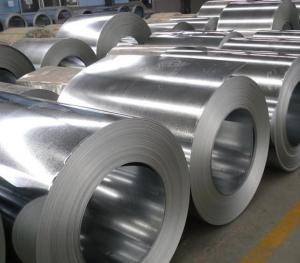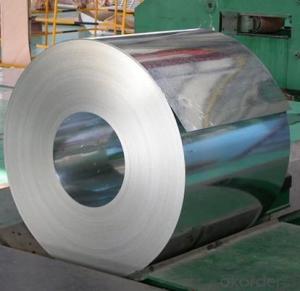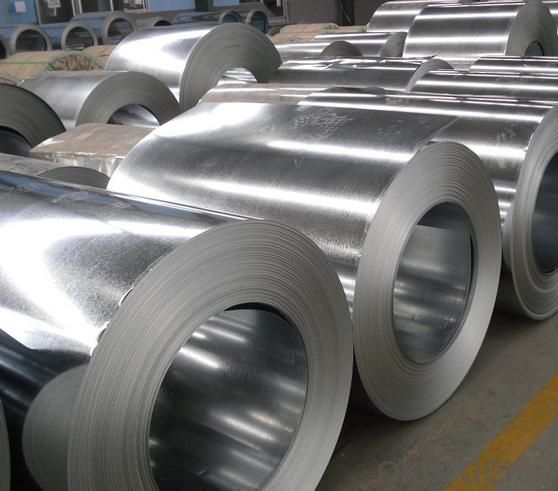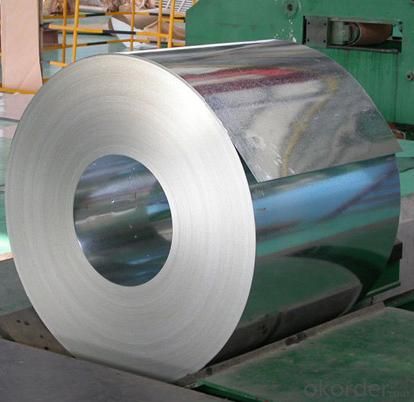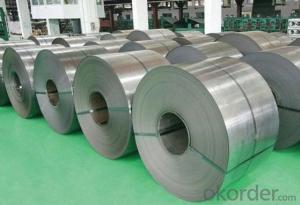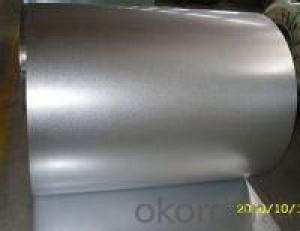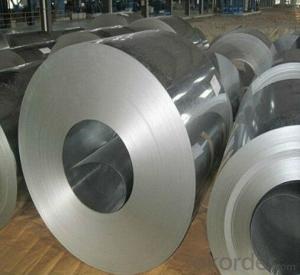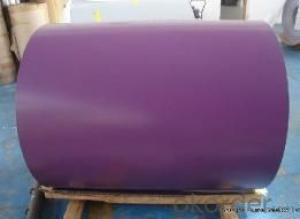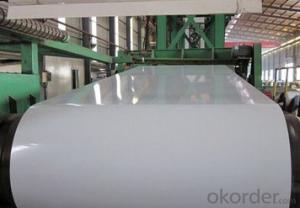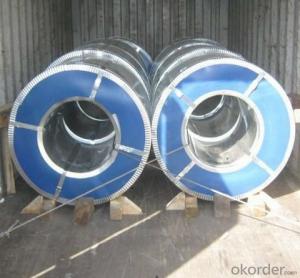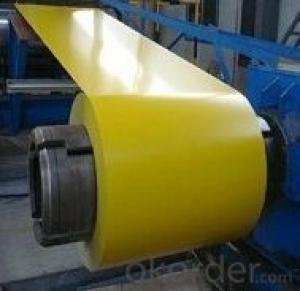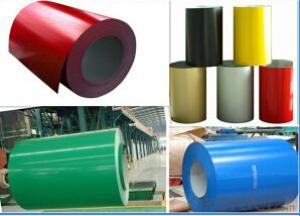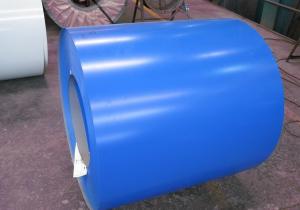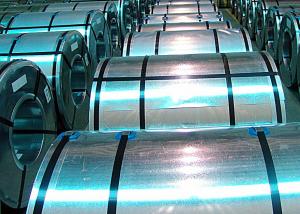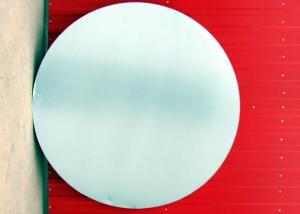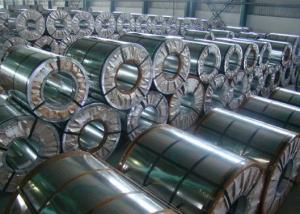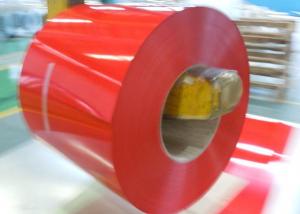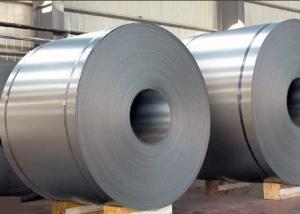Color Coated Galvanized Steel Coils PPGI/PPGL
- Loading Port:
- Shanghai
- Payment Terms:
- TT OR LC
- Min Order Qty:
- 25 m.t.
- Supply Capability:
- 10000 m.t./month
OKorder Service Pledge
OKorder Financial Service
You Might Also Like
Surface Treatment:Coated
Technique:Galvanized
Standard:JIS
Application:Container Plate
Edge:Mill
Stock:Stock
Steel Grade:CGCC, Dx51d, SGCC
Color:Ral 1015, 5002, 6005, 8017, 9002, 9006, 9010 etc.
Thickness:0.16-1.0mm
Width:914/1000/1200/1219/1220/1250mm
Base Metal:Galvanized or Galvalume Steel
Zinc-Coating:Z50-150G/M2 or Az40-100G/M2
ID Coil:508mm
Coil Weight:3-5 Mt
Painting:20-25miu on Top / 5-8miu on Back
Type of Coating:PE Smp PVDF
Export Markets:North America, South America, Southeast Asia, Eastern Asia
Additional Info.
Packing:Standard Export Seaworthy Packing In20′′ Container
Standard:0.14-1.0*914-1250*C
Origin:China
HS Code:72107010
Production Capacity:100000tons Per Year
Product Description
Color-coated Galvanized/Galvalume Steel Coil (PPGI/PPGL)
1. Techinical standard: EN10169
2. Grade: TDX51D, TSGCC
3. Color: Ral standard or according to customers' requirment
4. Thickness: 0.14-1.0mm (0.16-0.8mm is the most advantage thickness)
5. Width: 600-1250mm (610/724/820/914/1000/1200/1219/1220/1250mm)
6. Base metal: Galvanized / galvalume steel
7. Finish Painting: 15-20miu PE on top 5-8miu EP on back
8. Color: Ral standard
Acceptable payment term and way?
T/T,L/C, T/T + L/C, D/P
Acceptable price term
FOB CNF CIF DDU CPT
Do you accept OA payment terms?
Yes, sure, but it normally depending on the order value
Do you have QC team?
Yeah, sure, our QC team is very important, they will keep the qualitycontrol for our products.
What is the validity of your quotation?
Normally 7 days.
What is your advantage?
24 hour quick response /Customer oriented/ Credit foremost/ Top quality Excellent
What is your acceptable payment term?
TT,LC,OA etc
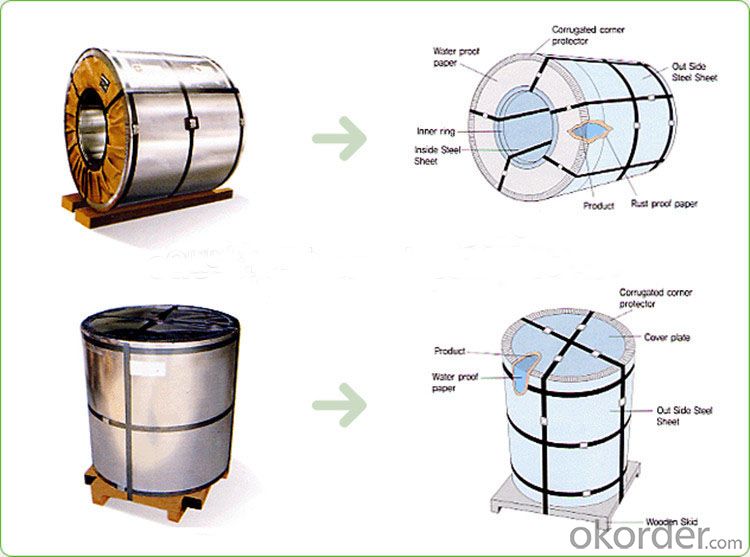
- Q: What are the typical lead times for ordering steel coils?
- The typical lead times for ordering steel coils can vary depending on various factors such as the type and size of the coil, the supplier's production capacity, and the current market conditions. However, on average, lead times for ordering steel coils can range from a few weeks to several months. For standard-sized steel coils that are readily available in the market, lead times are generally shorter and can range from a few weeks to a couple of months. This is because suppliers often maintain a stock of these commonly used coil sizes to meet immediate customer demands. However, it's important to note that lead times can still be influenced by factors like transportation and logistics. On the other hand, if you require custom-made or non-standard steel coils, lead times can be longer. These coils usually involve additional processes such as specialized cutting, shaping, or coating, which may require more time for production. Lead times for custom-made steel coils can range from a few months to even six months or more, depending on the complexity of the specifications and the supplier's production capabilities. It's worth mentioning that lead times can also be affected by external factors like market demand and availability of raw materials. During periods of high demand or when there are supply chain disruptions, lead times may be extended as suppliers need to adjust their production schedules accordingly. To accurately determine the lead times for ordering steel coils, it is recommended to reach out to specific suppliers or manufacturers. They will be able to provide you with the most up-to-date and accurate information based on your specific requirements and the current market conditions.
- Q: Can't find it- this is for a physics experiment for youngs modulus done with a steel wire.
- It depends on the type of steel and how the wire was made (e.g. whether it was drawn hot or cold, whether it was heat treated after it was drawn, etc). For mild steel the elastic limit is about 400 MPa. Note this is not the same as the breaking stress for the wire which will typically be significantly higher for a ductile material like steel. If you want to measure a stress-strain curve to find youngs modulus, make sure you measure several points at stresses below the elastic limit - for example try increasing the stress in increments of about 50 MPa.
- Q: Why is steel so important? How does it help us in everyday life?
- steel comes from iron. Iron is a natural resource and is abundent in nature. so being able to turn it into steel means it can be used for alllll sorts of things! from buildings, cars, piping and tubes, to washing machines, appliances and many other things. its used in our everyday life and is a great, strong material.
- Q: Well im currently doing a project. Wanna help me? Because trust me, i really need it. You know how steel was created in China? If you didnt, you just learned something newww(: but anyways got any info on that? Websites? or just info from websites? Well lemme know because if its the best you get Best Answer Easy points right? (: Okay thanksss (:
- Steel is created in a primitive way whenever iron oxide ore (red dirt) is mixed with wood and burned. Seemingly everyone has a pet theory how their own selected country was the first to notice and do it on purpose. Regards, Larry.
- Q: What kind of insulation should be used in a steel building?
- Vinyl fiberglass insulation is getting popular with the steel building industry. The vinyl fiberglass insulation offers a shining look to the building and is resistant to dust as well as condensation. Effective ventilation inside the steel building can also help in preventing the condensation process inside the building. Besides, the building doors should be insulated effectively so as to minimize the heat loss. Be sure to seal all the door gaps in the building. All these steps are necessary to follow to get an effectively insulated steel building.
- Q: How are steel coils protected against UV radiation?
- Steel coils are protected against UV radiation through the application of protective coatings or paints. These coatings act as a barrier, shielding the steel from direct exposure to UV rays, preventing oxidation and degradation of the metal.
- Q: How are steel coils used in the manufacturing of chassis frames?
- Steel coils are used in the manufacturing of chassis frames by being shaped and welded to form the structural backbone of vehicles. These coils are typically cut and pressed into specific shapes to create the necessary strength and rigidity required for chassis frames.
- Q: How are steel coils used in the manufacturing of metal structures?
- Steel coils are commonly used in the manufacturing of metal structures as they provide a convenient and efficient way to shape and form various components. These coils are unrolled and then processed through machinery that cuts, bends, and shapes the steel into the desired size and shape. This allows for precise and consistent fabrication, making it easier to assemble and construct metal structures such as buildings, bridges, and machinery.
- Q: What are the common applications of cold-rolled stainless steel coils?
- Due to their unique characteristics and versatility, cold-rolled stainless steel coils find widespread use in various industries. The following are some common applications of these coils: 1. Automotive Industry: Manufacturing parts like exhaust systems, trim, and body panels in the automotive industry extensively utilize cold-rolled stainless steel coils. The corrosion resistance and aesthetic appeal of stainless steel make it an ideal choice for these purposes. 2. Construction Industry: The construction industry heavily relies on stainless steel coils for roofing, cladding, and structural components. The durability, strength, and resistance to corrosion of cold-rolled stainless steel coils make them a preferred material in building and infrastructure projects. 3. Kitchen Appliances: Kitchen appliances such as refrigerators, ovens, and dishwashers commonly incorporate stainless steel coils. The hygienic properties, easy maintenance, and sleek appearance of stainless steel make it popular for these applications. 4. Food Processing Industry: In the food processing industry, cold-rolled stainless steel coils are extensively used due to their non-reactive nature and resistance to corrosion. These coils are used for manufacturing equipment, storage tanks, and conveyor systems in food processing plants. 5. Medical Equipment: Cold-rolled stainless steel coils are widely employed in the medical industry for manufacturing surgical instruments, implants, and medical devices. The biocompatibility, strength, and resistance to corrosion of stainless steel make it suitable for these critical applications. 6. Oil and Gas Industry: The oil and gas industry utilizes cold-rolled stainless steel coils in various applications, including pipelines, storage tanks, and offshore platforms. The high resistance to corrosion and extreme temperature conditions make stainless steel a reliable choice in this demanding industry. 7. Aerospace Industry: Stainless steel coils find use in the aerospace industry for manufacturing aircraft components, engine parts, and structural elements. The lightweight yet high-strength properties of stainless steel make it an ideal material for these applications. In summary, cold-rolled stainless steel coils have diverse applications across industries such as automotive, construction, kitchen appliances, food processing, medical, oil and gas, and aerospace. The unique combination of durability, corrosion resistance, strength, and aesthetic appeal makes stainless steel coils a preferred choice in various industrial sectors.
- Q: How are steel coils inspected for surface defects using non-destructive testing methods?
- Steel coils are inspected for surface defects using non-destructive testing methods such as visual inspection, magnetic particle inspection, and eddy current testing. Visual inspection involves closely examining the coil's surface for any visible defects or abnormalities. Magnetic particle inspection is used to detect surface cracks and defects by applying a magnetic field and then applying iron particles that reveal any magnetic leakage caused by defects. Eddy current testing is employed to detect surface cracks and defects by inducing an alternating current in a coil that creates a magnetic field, and any changes in the field caused by defects are detected. These non-destructive testing methods help ensure the quality and integrity of steel coils without causing any damage.
Send your message to us
Color Coated Galvanized Steel Coils PPGI/PPGL
- Loading Port:
- Shanghai
- Payment Terms:
- TT OR LC
- Min Order Qty:
- 25 m.t.
- Supply Capability:
- 10000 m.t./month
OKorder Service Pledge
OKorder Financial Service
Similar products
Hot products
Hot Searches
Related keywords
